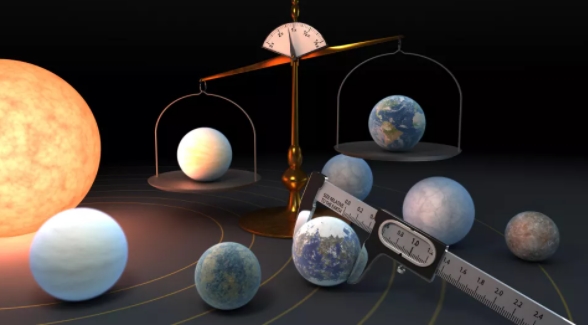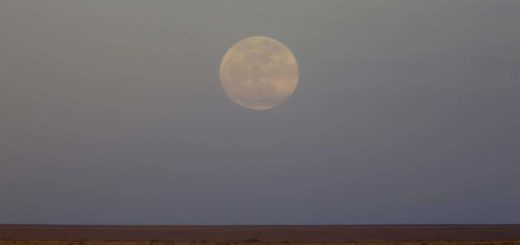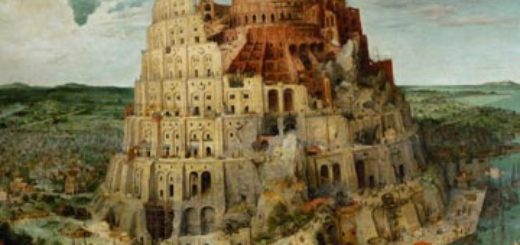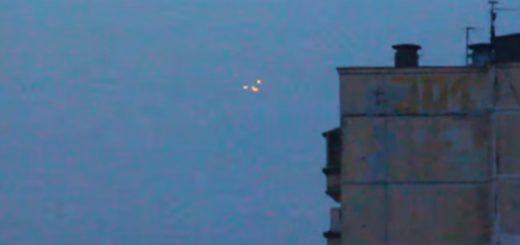The 7 alien planets orbiting TRAPPIST-1 are like peas in a pod

The seven rocky planets orbiting the red dwarf star TRAPPIST-1 have remarkably similar densities, suggesting they likely have similar compositions, too.
Located about 40 light-years from Earth, TRAPPIST-1 hosts seven rocky planets that are about the size of Earth or smaller — the largest group of roughly Earth-size planets ever found in a single stellar system.
Earlier studies measured the mass and diameter of the TRAPPIST-1 planets, and found they are rocky, or terrestrial, like Earth. However, a new study measured the density of the rocky worlds in greater precision, suggesting that all of the planets are about 8% less dense than Earth, according to a statement from NASA’s Jet Propulsion Laboratory.
Related: What would life be like on the TRAPPIST-1 planets?
Click here for more Space.com videos…
“The night sky is full of planets, and it’s only been within the last 30 years that we’ve been able to start unraveling their mysteries,” Caroline Dorn, an astrophysicist at the University of Zurich and coauthor of the study, said in the statement. “The TRAPPIST-1 system is fascinating because around this one star we can learn about the diversity of rocky planets within a single system. And we can actually learn more about a planet by studying its neighbors as well, so this system is perfect for that.”
Researchers are able to study the exoplanets orbiting TRAPPIST-1 by looking for dips in the star’s brightness created when the planets cross in front of it — also known as the transit method. These observations, combined with measurements of the timing of the planets’ orbits, allowed astronomers to calculate an estimated mass and diameter of each planet, according to the statement; that information determines each world’s density.
The similar densities of the TRAPPIST-1 planets (they differ by no more than 3%, the scientists found) could mean that they all contain the same proportion of the materials that make up most rocky planets, like iron, oxygen, magnesium and silicon.
However, since the planets are about 8% less dense than Earth, they do not have the same composition as our home planet. Therefore, the new study has proposed three possible interiors of the seven rocky exoplanets.
Space.com Collection: $26.99 at Magazines Direct
Get ready to explore the wonders of our incredible universe! The “Space.com Collection” is packed with amazing astronomy, incredible discoveries and the latest missions from space agencies around the world. From distant galaxies to the planets, moons and asteroids of our own solar system, you’ll discover a wealth of facts about the cosmos, and learn about the new technologies, telescopes and rockets in development that will reveal even more of its secrets. VIEW DEAL
trappist-1 exoplanets measurements core
Researchers have proposed three possible interiors of the seven rocky TRAPPIST-1 exoplanets. (Image credit: NASA/JPL-Caltech)
One possible explanation is that the TRAPPIST-1 planets have a composition similar to that of the Earth, but with a lower percentage of iron — roughly 21% compared to the 32% of the Earth. This would mean that each planet has a rocky surface and a smaller iron-rich core than that of Earth.
Alternatively, an interior comprised of iron mixed with lighter elements, such as oxygen, could explain a lower density. In this case, the oxygen and iron would form iron oxide, or rust. The additional oxygen would decrease the density of the planets. In turn, there would be no solid iron core, like that of many other rocky planets, including Earth, according to the study.
Lastly, the researchers suggest the surface of each planet could be covered with water, which is even lighter than rust and could explain the planets’ lower density compared to Earth. In this scenario, the planets would have a larger, denser iron core.
But in this third scenario, water would need to account for about 5% of the total mass of the four outer TRAPPIST-1 planets; water makes up less than one-tenth of 1% of Earth’s total mass. Meanwhile, the three inner TRAPPIST-1 planets are located too close to their host star for surface water to remain a liquid. Instead, the water would be vaporized and remain in the atmosphere as steam, meaning the three inner planets would have hot, dense atmospheres like Venus.
However, researchers have said the third scenario is less likely given all seven planets have remarkably similar densities, but would require varying proportions of water relative to their proximity to TRAPPIST-1. “It would be a coincidence for all seven planets to have just enough water present to have such similar densities,” according to the NASA statement.



 Creators of mankind
Creators of mankind Description of “Tall white aliens”
Description of “Tall white aliens” Where they came from?
Where they came from? About hostile civilizations
About hostile civilizations The war for the Earth
The war for the Earth “Tall white aliens” about eternal life
“Tall white aliens” about eternal life Video: “Nordic aliens”
Video: “Nordic aliens” Aliens
Aliens Alien encounters
Alien encounters The aliens base
The aliens base UFO
UFO Technology UFO
Technology UFO Underground civilization
Underground civilization Ancient alien artifacts
Ancient alien artifacts Military and UFO
Military and UFO Mysteries and hypotheses
Mysteries and hypotheses Scientific facts
Scientific facts


















